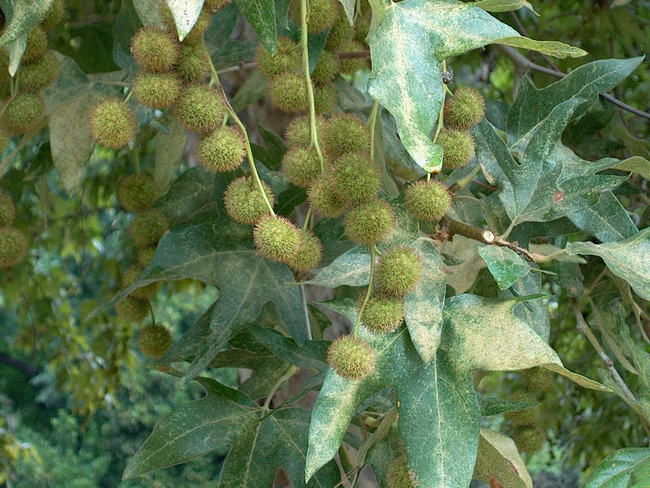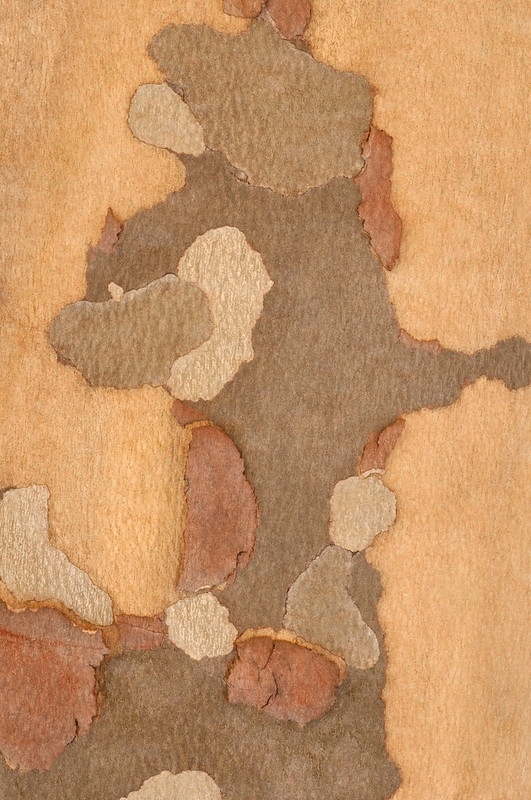- Author: Melinda Nestlerode
While walking with my dog, Bowie, this summer, during a particularly hot spell, we noticed that the street trees had thrown off an enormous quantity of bark. The bark was scattered all over the sidewalk, the street, the planting median, and front lawns. The trees are California sycamores (Platanus racemosa). After shuffling through the messy sidewalks, I was concerned for the health of the trees, but also questioning whether sycamores are the best choice for a street tree. Afterall, they are deciduous, dropping copious amounts of yellow to brown leaves each fall, their “dingleball” seed clusters (aka achenes) make a mess, and now this shedding of large amounts of bark!
I researched the trees, and learned that their pros far outweigh their cons. The California sycamore, also known as a Plane Tree, is native to California and Baja California. Although their natural habitat is usually in riparian environments, they are tolerant of heat and wind, and, once established, will do well in the suburban landscape with supplemental water. Their root system tends to grow downward rather than outward if given enough water, which makes them a good fit as a street tree.
Sycamores are extremely fast-growing, achieving a height of 40 to 80 feet or more, with a width of up to three feet. The trees are beautiful. In the suburban environment, their height and large, maple-like, leaves provide shade in the summer, and the bare branches let winter light and warmth through to the homes below. The bark itself (when attached to the tree) is interesting and attractive, arranged in a puzzle pattern with various shades of tan, beige and brown. After it peels, which I learned is simply a natural part of the tree's growing process, it reveals a creamy beige/yellow-colored bark underneath.
The “dingleballs” are both male and female flower clusters. After pollinating, the male clusters drop off the tree, while the females develop into spherical fruit clusters made up of hairy, red achenes. An achene is a one-seeded fruit that does not open to release the seed. After the seeds are dispersed, the seed balls are used for food and bedding by squirrels and other mammals. The seeds themselves provide food for birds, and several small animals eat the bark and twigs. The sycamore tree is important to the life cycle of the western tiger swallowtail butterfly (Papilio rutulus), whose larva depend on it for protection from the summer sun and nutrients as they develop into adults.
Sycamores are susceptible to the usual multitude of insect pests, such as borers, aphids, scale, mites, whitefly and caterpillars. Diseases which can affect the tree include anthracnose, cankers, leafspot, powdery mildew, root and crown rot and wood decay.
My conclusion is that these majestic trees, while they are certainly messy and require cleanup and some water, were a good choice for our neighborhood street trees.





